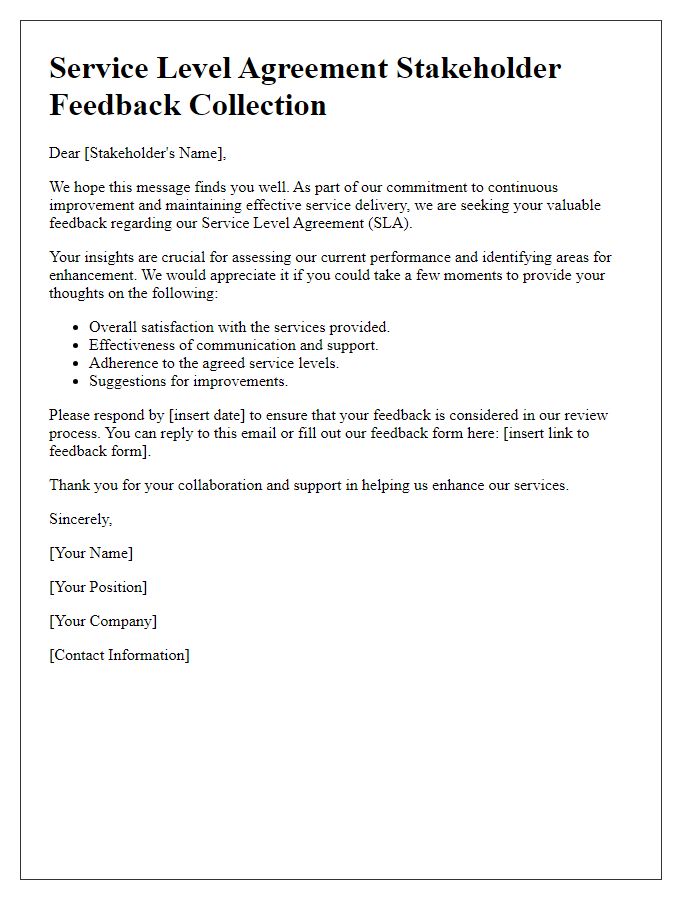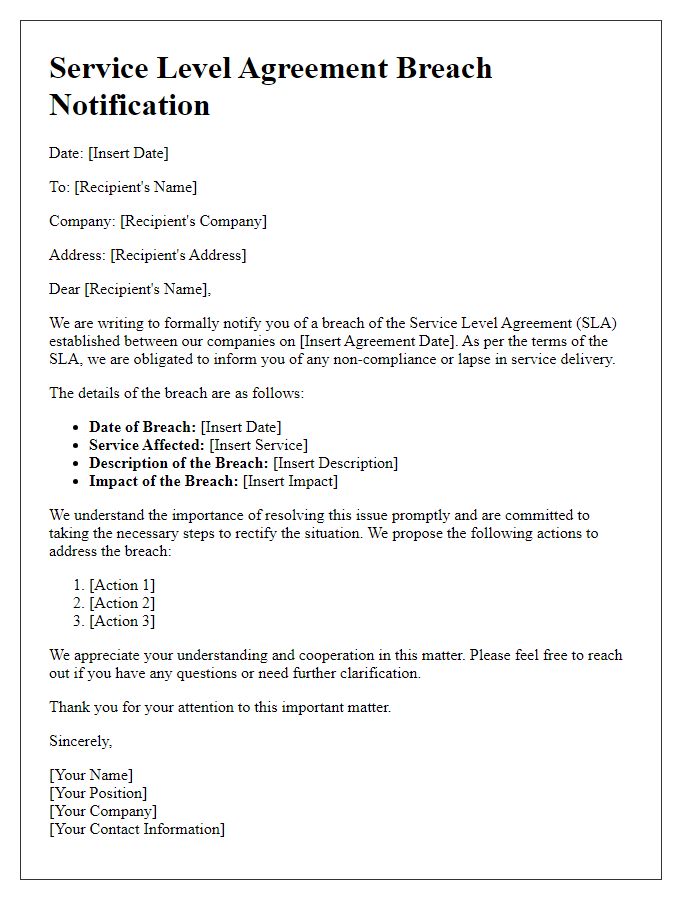Are you navigating the complex world of service level agreements (SLAs) and seeking to establish clear benchmarks for your business? An effective SLA is crucial not only for setting expectations but also for ensuring that both parties are on the same page regarding service quality and performance metrics. By understanding the key components and best practices, you can craft an SLA that fosters collaboration and drives success. Dive into our article to discover essential tips and templates that will guide you in creating your own service level agreement benchmark!

Clear Definition of Services
A service level agreement (SLA) benchmark must include a clear definition of services provided, outlining specific offerings such as customer support, technical assistance, and maintenance. Each service should be categorized based on response times, for example, emergency issues requiring a response within 1 hour, and non-urgent requests addressed within 24 hours. Detailed descriptions of each service category, such as Level 1 support for immediate technical issues or Level 2 for more complex inquiries, are crucial. Additionally, metrics like uptime percentages, for instance, 99.9% uptime, should be stated to ensure reliability. Locations of service delivery, including whether services are offered remotely or on-site at locations such as offices or data centers, should also be specified. Furthermore, stakeholders must be identified alongside their roles, such as service managers or technical leads, to promote accountability and effective communication.
Performance Metrics and Standards
A service level agreement (SLA) benchmark establishes clear performance metrics and standards to ensure accountability and quality of service. These metrics typically include response times, such as 24-hour support for critical issues, resolution times for service requests averaging 72 hours, and uptime guarantees of 99.9% for cloud-based services like Amazon Web Services. Additionally, customer satisfaction scores, measured through quarterly surveys, should maintain a minimum of 85% satisfaction. Incident escalation procedures must be documented, detailing the timeline for escalating unresolved issues to senior support teams within 4 hours. Regular review meetings, held bi-monthly, will assess these performance metrics, allowing adjustments based on evolving client needs or industry standards. This structured approach fosters transparency and continuous improvement within the service delivery model.
Monitoring and Reporting Procedures
Monitoring and reporting procedures significantly impact service level agreements (SLAs) between businesses and service providers. Established metrics, such as response times (average of 2 hours), resolution times (average of 24 hours), and uptime percentages (99.9% target), are crucial for assessing service performance. Regular reporting intervals, including weekly and monthly updates, ensure ongoing visibility into operational effectiveness. Dashboards displaying real-time data help stakeholders gauge service adherence. Additionally, incident reports detailing any service failures or disruptions provide essential insights, fostering accountability in maintaining high service standards. Continuous monitoring through automated tools can enhance accuracy in performance tracking, ultimately contributing to improved satisfaction levels among users and businesses alike.
Responsibilities and Obligations
Service Level Agreements (SLAs) outline responsibilities and obligations between service providers and clients. Clear definitions enhance accountability, ensuring timely support and service quality. Key metrics include response times, resolution rates, and uptime percentages, typically specified in percentage terms, such as 99.9% uptime for critical systems. Regular monitoring and reporting engage stakeholders, often scheduled monthly or quarterly. The obligations involve maintaining clear communication channels, typically via email or dedicated platforms, and adhering to agreed incident management processes. Understanding these responsibilities fosters a collaborative environment and maximizes service effectiveness while minimizing disruptions in business operations.
Termination and Renewal Conditions
In the context of a service level agreement (SLA), termination and renewal conditions play a crucial role in defining the longevity and stability of a contractual relationship. Typically, the termination clause outlines the specific circumstances under which either party can end the agreement, including breaches of contract, failure to meet performance metrics, or unforeseen events such as natural disasters. For instance, a notice period of 30 days may be required for termination, ensuring that both parties have ample time to prepare for the transition. Renewal conditions, on the other hand, specify the process for extending the agreement, which may include review periods, adjustment of service levels, and potential changes in pricing structures. Engaging in timely discussions 90 days before the expiration date can enable both parties to negotiate terms that reflect evolving business needs and service performance, fostering a collaborative environment for continued partnership.
Letter Template For Service Level Agreement Benchmark Samples
Letter template of service level agreement performance metric discussion

Letter template of service level agreement stakeholder feedback collection












Comments